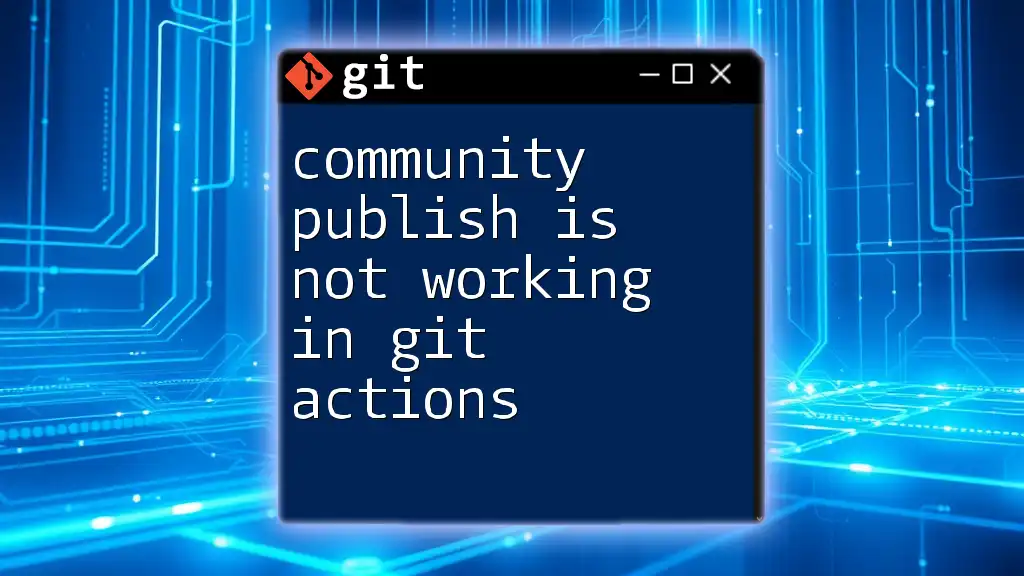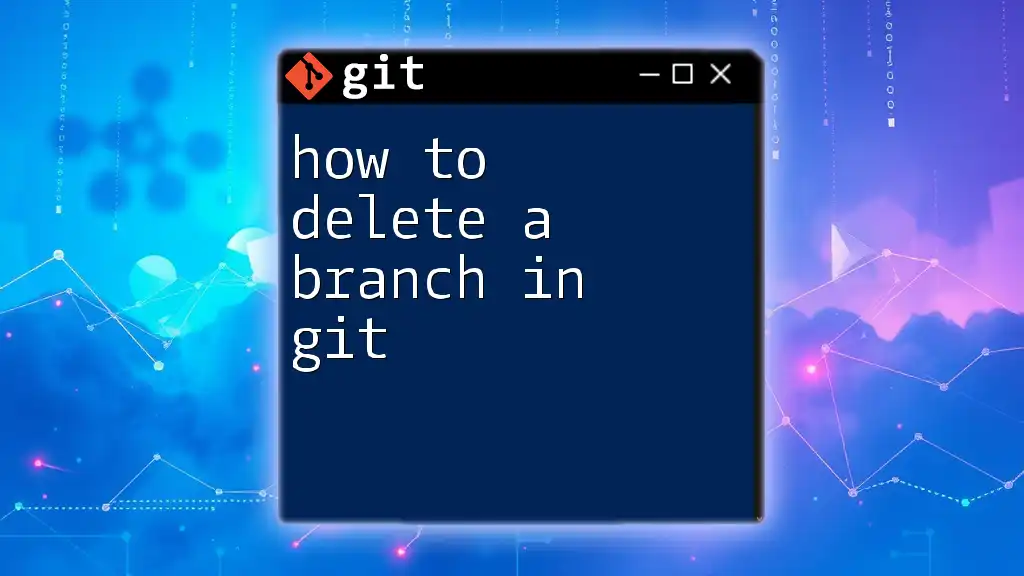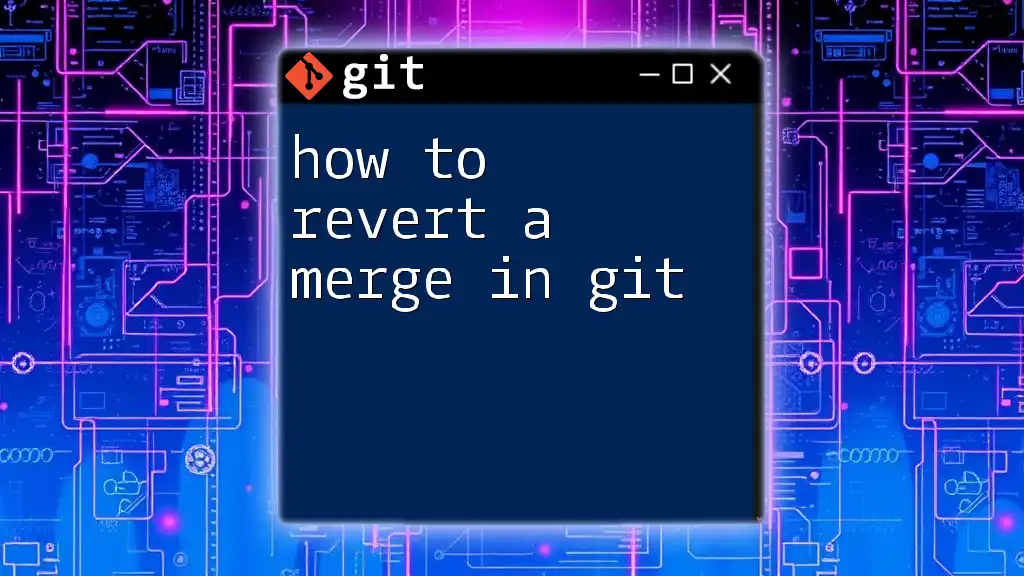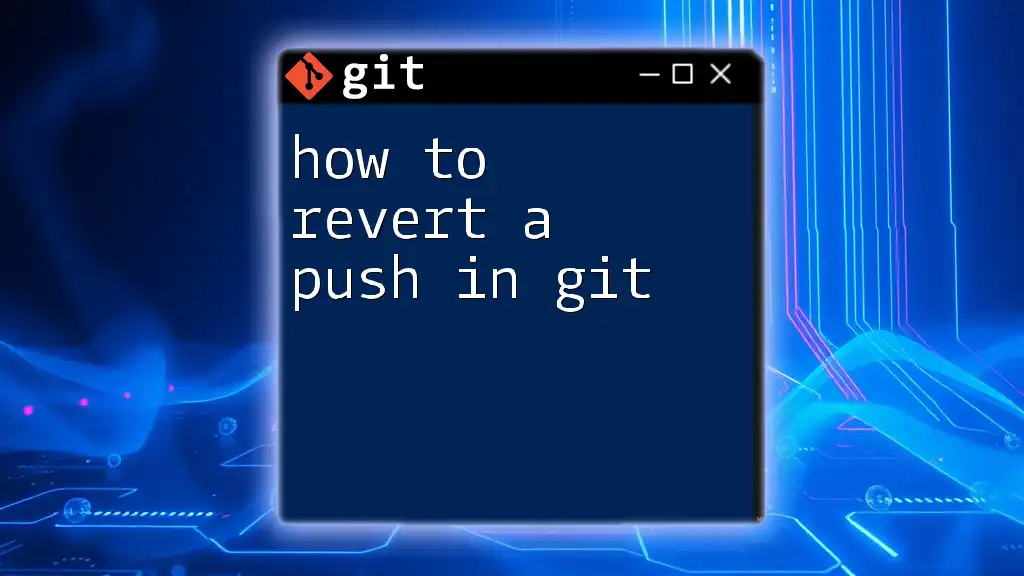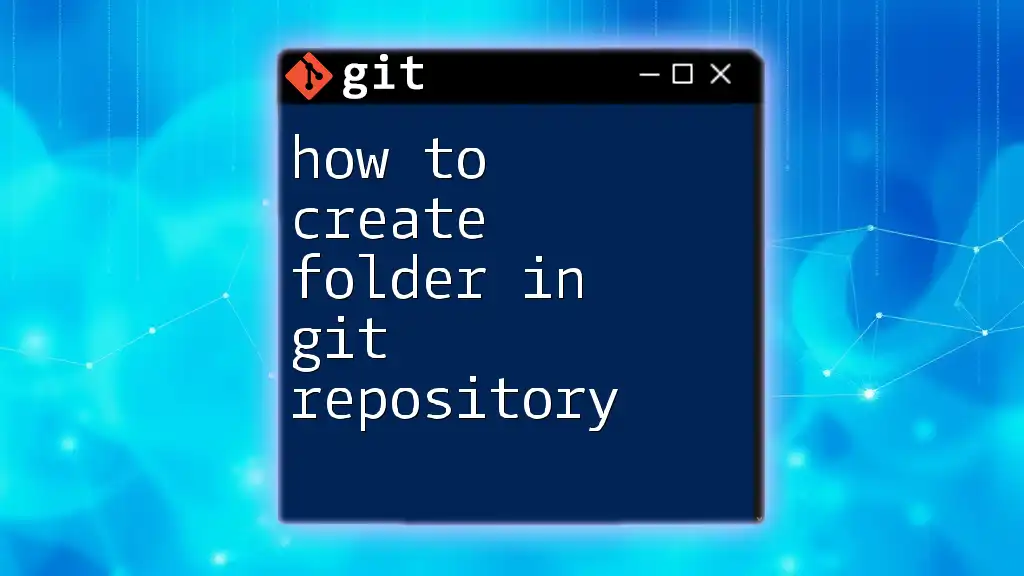To effectively organize your React learning in Git, create dedicated branches for each project or feature, enabling efficient version control and collaboration.
# Create a new branch for your React project
git checkout -b react-learning-section
# Add your React code files
git add .
# Commit your changes with a descriptive message
git commit -m "Initial commit of React learning section"
# Push the branch to the remote repository
git push origin react-learning-section
Understanding Git Basics
What is Git?
Git is a powerful version control system that allows developers to manage changes to their code over time. It enables users to track modifications, collaborate with others, and manage project history efficiently. Understanding Git is fundamental for anyone looking to expand their skills in software development, especially when learning complex frameworks like React.
Setting Up Git
Before diving into your React learning journey, the first step is setting up Git on your machine. Installing Git varies depending on your operating system—whether you are using Windows, macOS, or a Linux distribution. Here’s a brief overview:
- Windows: Download the Git installer from the official website and follow the instructions.
- macOS: You can install Git using Homebrew with the command `brew install git`.
- Linux: Use your package manager, such as `apt` for Debian-based systems:
sudo apt install git
Once installed, configure Git with your name and email to ensure accurate commit history using the following commands:
git config --global user.name "Your Name"
git config --global user.email "your.email@example.com"
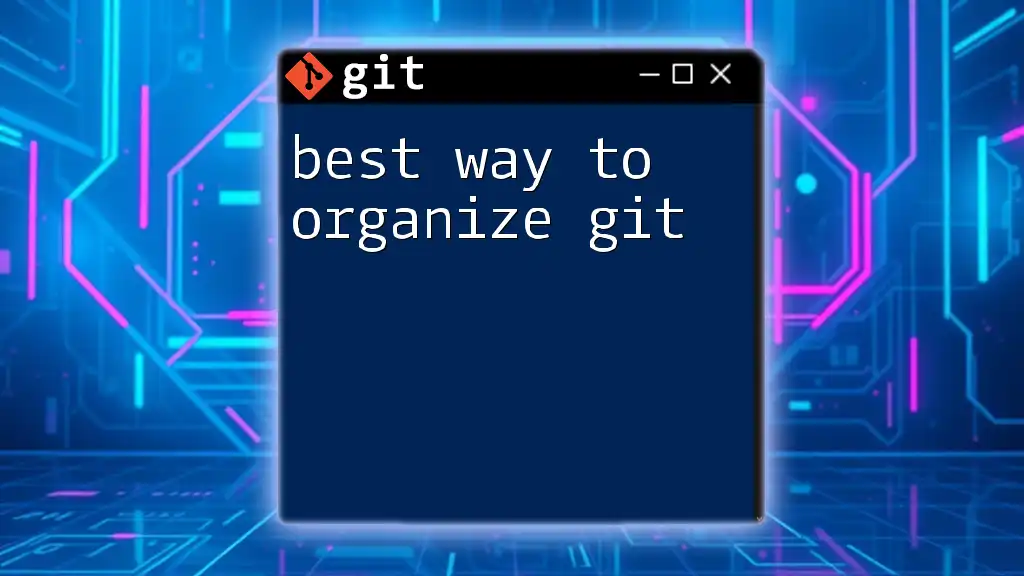
Creating a Git Repository for React Learning
Initializing a New Repository
To start organizing your React learning, you need to create a new Git repository. Follow these steps to initialize a Git repository for your project:
mkdir react-learning
cd react-learning
git init
This command sets up a new repository in the `react-learning` directory, allowing you to track all future changes to your project.
Structuring Your Project
Having a well-defined directory structure significantly enhances your learning experience. It helps you find files easily and keeps your project organized. Here’s a recommended directory structure for a React project:
react-learning/
├── src/
│ ├── components/
│ ├── hooks/
│ └── styles/
├── public/
├── tests/
└── README.md
- src/: This is where your main application code resides.
- components/: Store reusable components that make up the UI.
- hooks/: Keep custom hooks that can be reused across your application.
- styles/: Organize your CSS or styled-components.
- tests/: Include any testing scripts for your components.
- README.md: Document your project’s overview and installation steps.
Creating and Managing Branches
Branches in Git allow you to work on different features or experiments without affecting the main codebase. Using branches effectively is one of the best ways to organize React learning. Naming conventions for branches can greatly improve clarity:
- Use descriptive names like `feature/add-component` or `bugfix/fix-crash`.
To create and switch to a new branch, use:
git branch feature/add-component
git checkout feature/add-component
This method keeps your main branch clean and allows you to focus on specific tasks during your learning.
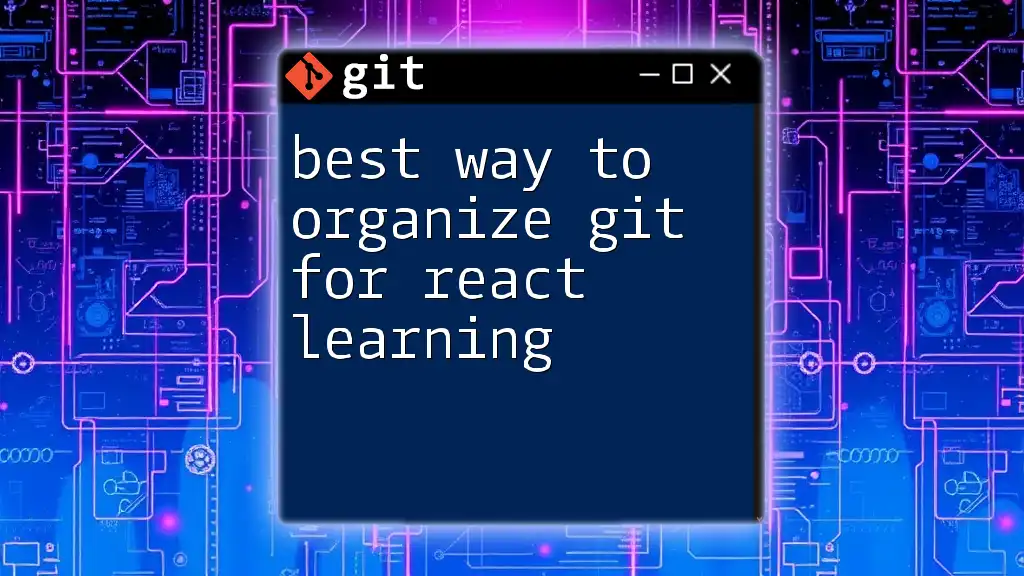
Managing Commits in Your Learning Journey
Writing Meaningful Commit Messages
Clear, descriptive commit messages are essential for tracking your progress and understanding changes later on. It’s beneficial for both you and any collaborators (if you choose to work with others).
Good examples of commit messages include:
- `Added navigation component with responsive design`
- `Implemented login functionality with Redux`
On the other hand, vague messages like `Update` or `Final changes` fail to convey the specifics of what was done, which can lead to confusion in the future.
Committing Changes Regularly
Committing your changes regularly captures snapshots of your progress. Aim to commit changes after completing significant tasks or when reaching notable milestones. Regular commits create a detailed record of your work, making it easier to roll back if needed.
As you learn React, this practice helps you build confidence in your coding skills and understand the logical progression of your project.
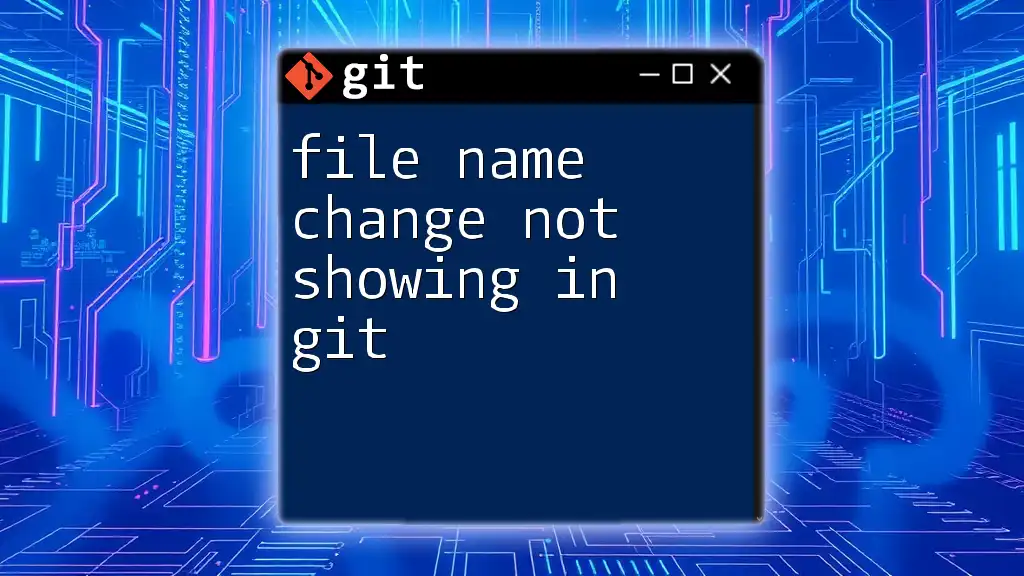
Collaborating and Sharing Your Learning Experience
Using Remote Repositories
Utilizing remote Git repositories is an essential step in making your learning more collaborative and accessible. Platforms like GitHub, GitLab, or Bitbucket enable you to share your projects with others and receive valuable feedback.
To create a remote repository, simply sign in to your preferred platform and follow the instructions to set up a new repository. Once created, you can link your local repository to it and push your changes:
git remote add origin https://github.com/yourusername/react-learning.git
git push -u origin main
Pull Requests and Code Reviews
Pull requests (PRs) are a crucial part of collaborative workflows. They allow you to propose changes before merging them into the main branch. Engaging in code reviews during the pull request phase helps enhance your skills through constructive feedback from peers.
To create a pull request on GitHub, navigate to the repository page, and you’ll often see an option to create a PR after pushing a branch. This process is an excellent way to learn from others and improve your coding practices.
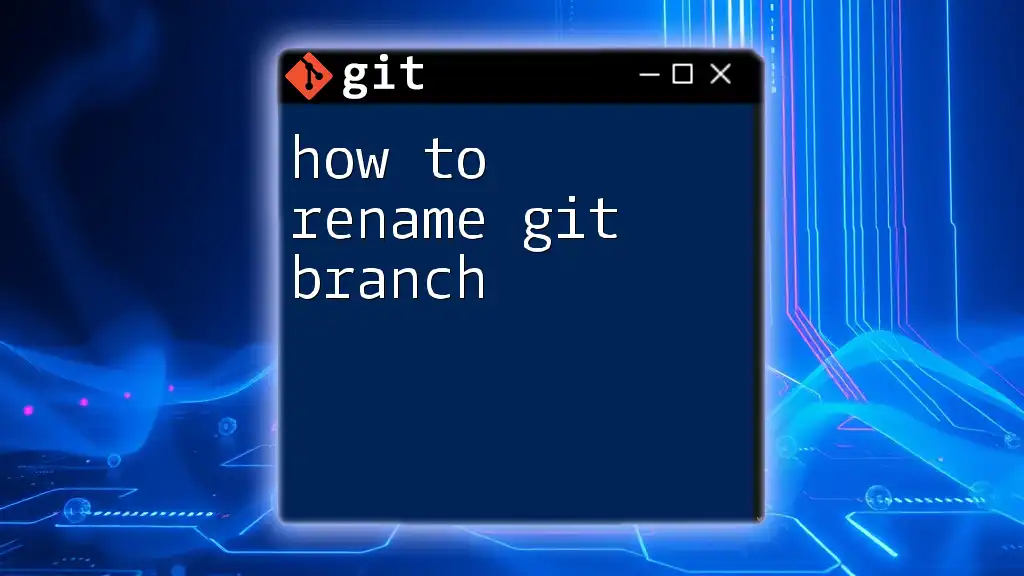
Additional Learning Resources
Suggested Tutorials and Online Courses
To further enhance your React skills, consider enrolling in online courses. Platforms like Udemy, Coursera, and freeCodeCamp offer comprehensive React tutorials that cater to various skill levels. Look for content that includes hands-on projects to reinforce your learning.
Engaging with the Community
Being part of the React community can significantly enrich your learning experience. Join forums, attend local meetups, or participate in online communities like Reddit or Discord. Networking with fellow learners and experienced developers fosters knowledge sharing and can lead to collaborative opportunities.
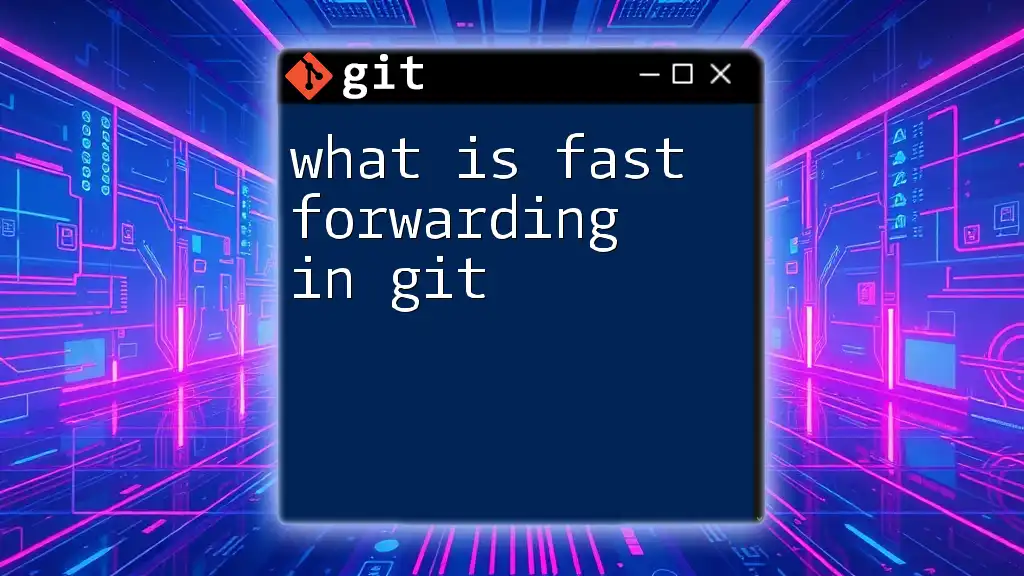
Tips for Staying Organized
Regularly Update the README
Your `README.md` file serves as a project’s face. Keeping it updated enhances organization and helps others (or even you in the future) understand your project quickly. Make sure to include:
- An overview of your project.
- Instructions on how to install and run it.
- Key features or components you've built.
Here’s a simple structure for a README:
# React Learning Project
<InternalLink slug="delete-a-remote-branch-in-git" title="Delete a Remote Branch in Git: A Quick Guide" featuredImg="/images/posts/d/delete-a-remote-branch-in-git.webp" />
## Overview
A brief description of the project...
<InternalLink slug="how-to-create-a-folder-in-git" title="How to Create a Folder in Git Efficiently" featuredImg="/images/posts/h/how-to-create-a-folder-in-git.webp" />
## Installation
Instructions to install and run the project...
Utilizing Pull Requests for Personal Reflection
Even if you’re working solo, consider utilizing pull requests within your own projects. This practice allows you to reflect on changes before merging them and helps you internalize what you've learned.
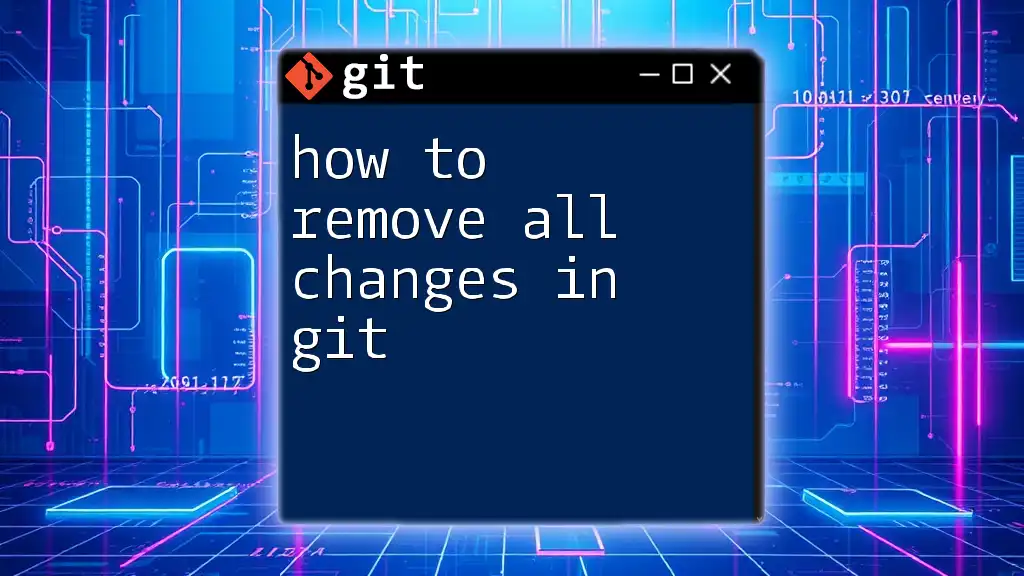
Conclusion
Organizing your React learning in Git is not only about version control but also about enhancing your productivity and clarity. By following these strategies—establishing a clear project structure, writing meaningful commit messages, and leveraging collaboration—you can create a productive learning environment. Remember, the best way to organize react learning in git means continuously refining your approach, engaging with the community, and documenting your progress for future reference.
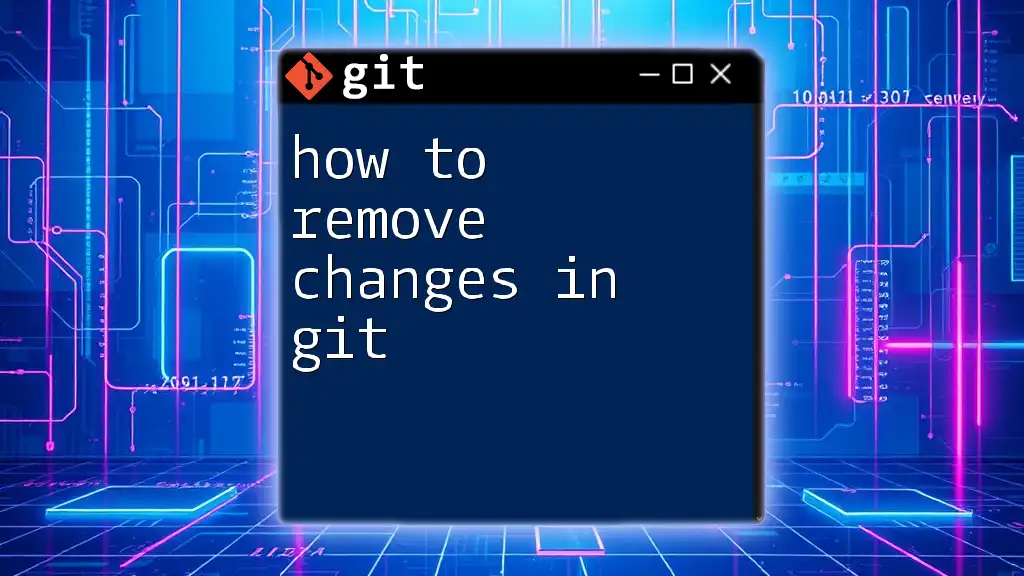
Call to Action
Stay tuned for more insights into using Git to improve your learning and development journey. Don’t hesitate to reach out with questions or share your own tips in the comments!










